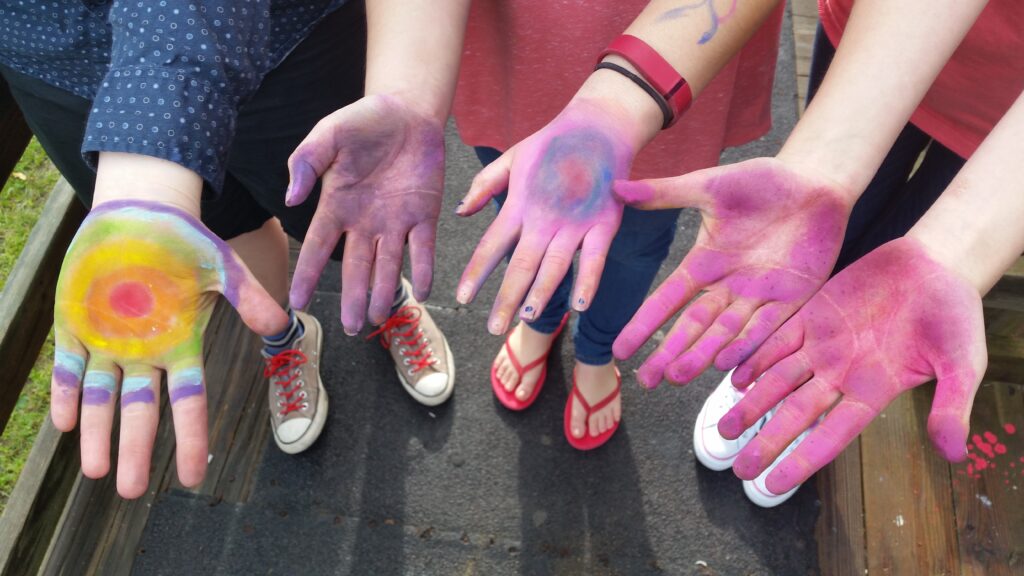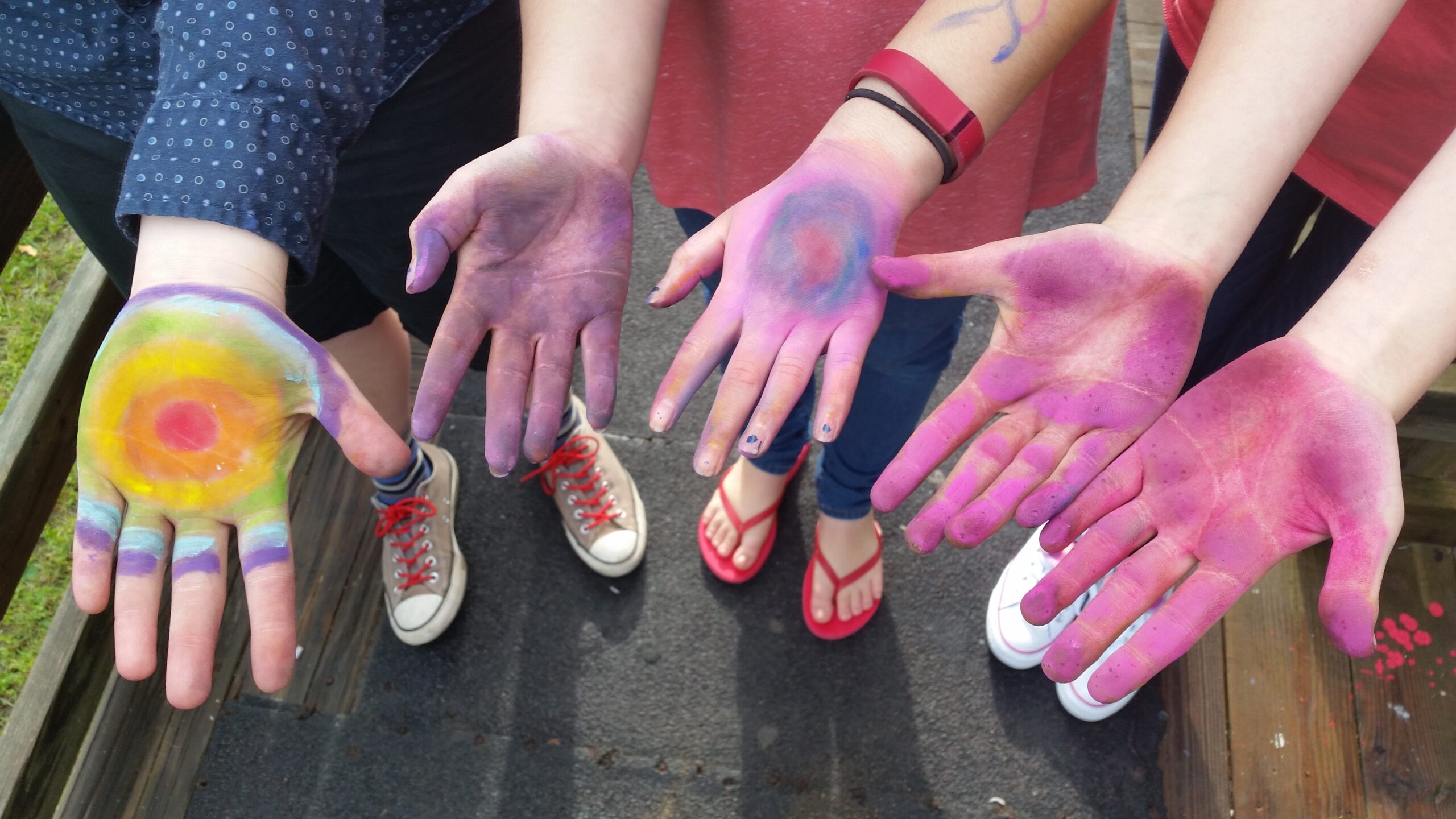I didn’t always want to be a teacher, though art has always been a huge part of my life. In high school I had dreams of being a painter, living in New York, working on important art in my loft and attending gallery openings. After graduating, I happily attended art school as a painting major until–on a whim–I signed up for an art education class. I was surprised when it was a perfect fit.
I loved the class. I noticed being part of an art-making community felt good in a way that working alone in the studio didn’t and I thrived on the connections I made with students. I decided to switch my major to art education a few weeks into the class and never looked back. Of course, there have been times that teaching has been hard – losing a classroom, dealing with school reform, budget cuts and issues with student behavior are a few challenges I’ve experienced. To be honest, at times I’ve considered doing something else but I’ve always decided against it because, ultimately, teaching is where my heart is. Here are four reasons why I’m thankful to be an art teacher.
Following My Passion
Art is amazing. I feel alive when I’m working on a project and the act of creating brings me true joy. Sharing this with children adds so much richness to my world. Moments like seeing a kindergartner delight in the magic of mixing paint or the pride on a student’s face when they succeed in making their vision a reality are priceless. I’m thankful I get to spend my days sharing my passion for art with others.

Seeing Students Excel
The experience of teaching someone new information and seeing them apply it successfully is a powerful one. It’s a sort of immortality, knowing your expertise and advice has been passed on to the next generation. It’s also incredibly rewarding to see students achieve great things, like winning awards or getting into a competitive art program. However, it’s just as rewarding when a child perseveres, works through challenges, or shows growth, whatever their level. Teaching has shown me our capacity for growth is limitless. I’m thankful to work with children who continually inspire me with their effort and creativity.
Helping Kids Who Need Someone in Their Corner

Life can be hard, especially so for children who shouldn’t have to experience the cruelness of the world. I’ve learned over the years when a student misbehaves it’s because, somewhere in their life, basic needs are not being met. Often there are limits to what I can do to make a situation better, but I can always be kind and show them I care. Doing things like asking what’s wrong, listening, or giving second (and third) chances whenever I’m able, have helped me develop relationships that allow me to support kids who are going through tough times. I’m thankful to be in a profession where I have the opportunity to help kids that need someone who cares.
Developing Personal Voice
Helping kids find ways to talk about things that are important to them through art is powerful. I remember how essential art was for me as a teenager and providing room for kids to create work that is important to them has enriched my life. This has been true the entire time I’ve spent as a teacher, but even more so once I discovered TAB. The shift from organizing my classroom around projects to organizing to support the uniqueness of every student has made my teaching better and more meaningful for my students. I’m thankful I am able to facilitate self-expression for all of my students.
I can’t imagine my life without teaching. I love the fact that I’m able to share my love of art with my students and help them grow as artists and creative thinkers. Teaching has added purpose and meaning to my life. Art teachers–all of us–fill a world that sometimes can be all to gray with vibrant color. I’m so grateful for the opportunity to spend my life doing such important work with colleagues like you. Thank you.
Why are you thankful to be a teacher?
What are you most passionate about in your teaching?
Magazine articles and podcasts are opinions of professional education contributors and do not necessarily represent the position of the Art of Education University (AOEU) or its academic offerings. Contributors use terms in the way they are most often talked about in the scope of their educational experiences.





